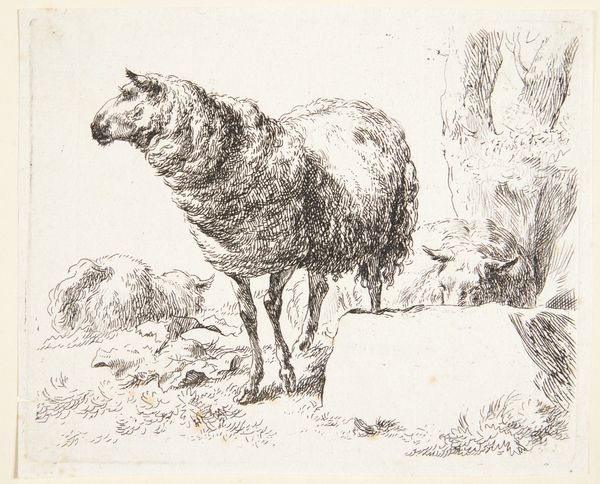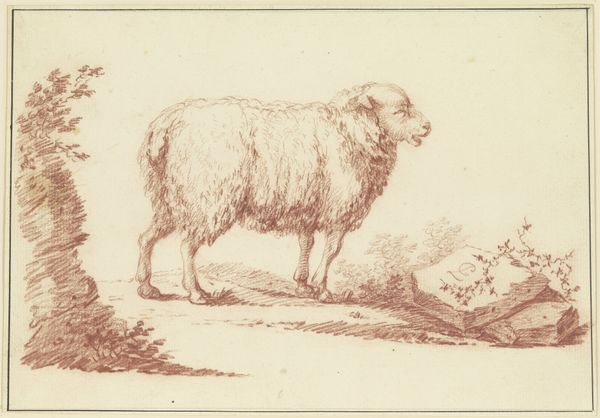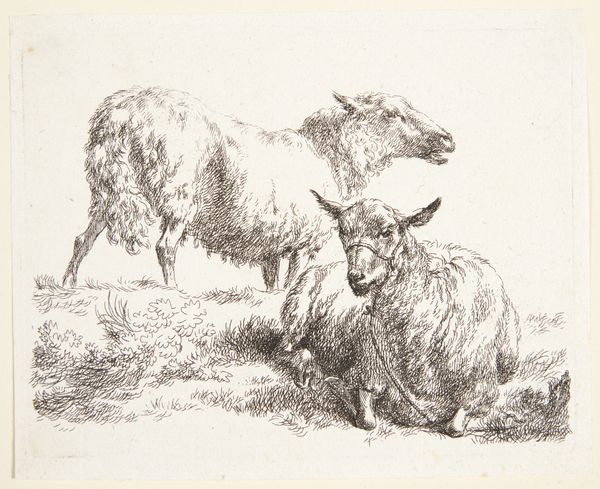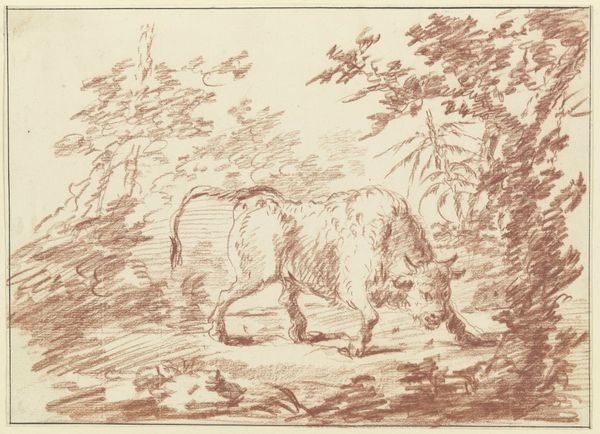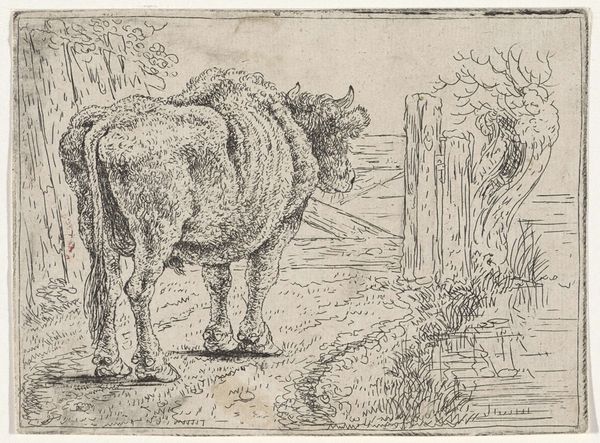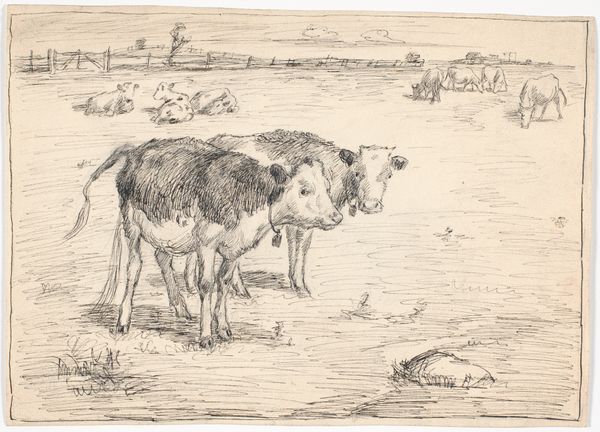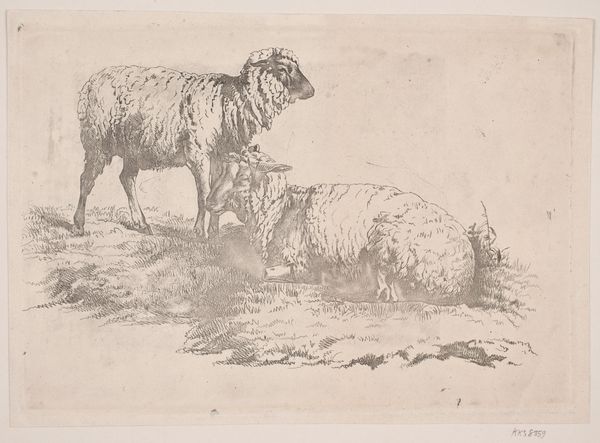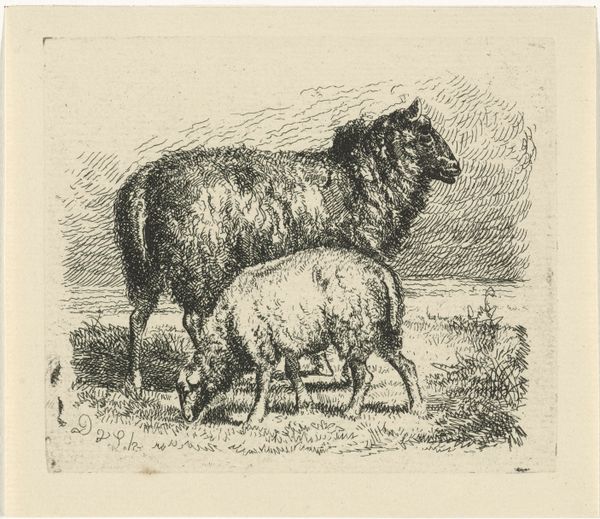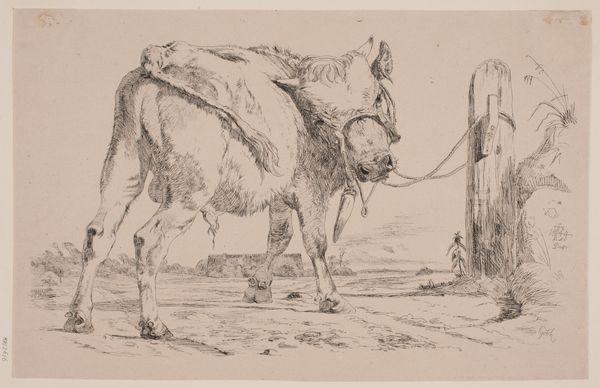
drawing, print, etching, ink
#
drawing
#
baroque
# print
#
pen sketch
#
etching
#
landscape
#
figuration
#
ink
#
line
#
genre-painting
#
realism
Dimensions: 102 mm (height) x 129 mm (width) (bladmaal)
Nicolaes Berchem created this drawing, "Et stående får," which translates to "A Standing Sheep," sometime between 1620 and 1683. Berchem was a prominent figure in the Dutch Golden Age, a period marked by the rise of mercantile capitalism, colonialism, and the expansion of global trade networks. Berchem, like many of his contemporaries, often depicted pastoral scenes that romanticized rural life, reflecting the values and tastes of an increasingly urbanized and wealthy Dutch society. While seemingly simple, images like "A Standing Sheep" subtly highlight the economic structures of the time. Sheep were commodities, central to the wool trade that fueled the Dutch economy. Consider the sheep's gaze—perhaps it's a subtle nod to the voiceless laborers, both human and animal, whose exploitation underpinned the Dutch Golden Age. In its quiet stillness, the drawing prompts us to reflect on the complex relationship between humans, animals, and the economic systems that shape their existence.
Comments
No comments
Be the first to comment and join the conversation on the ultimate creative platform.
